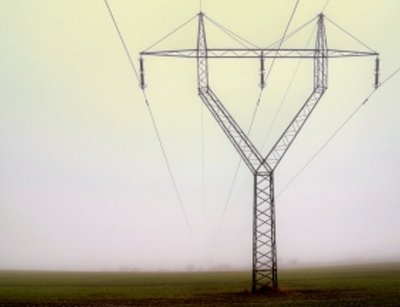Energy efficiency has been a key driver for our industry which has seen costs rise and sustainability become a corporate responsibility for all. We are now starting to look beyond the data center for the next opportunity for efficiency, reliability and sustainability.
With power grids changing, there has been a shift in the dynamic between the data center operators (DCOs) and the utility providers (see Chart 1 below).

It is clear that the grid operators and power generation players will invest in intelligent grid distribution and management solutions where there is a return on their investment in markets catalysed by government incentives. But this poses the obvious question of how the data center industry will leverage this development?
DCOs are now beginning to explore how smart grid and microgrid technologies will change a key facet of their business model. In the context of the DCO relationship with the utility provider there is movement from a ‘cost center’ mentality to a ‘revenue’ opportunity.
Without getting into technical detail, this article looks at how smart energy grids and microgrids can change the relationship between the utility provider and the industrial consumer and perhaps introduce a revenue stream that helps offset increased energy prices. Some of the concepts and opportunities covered are already being embraced by other industries (think chemical plants, refineries etc). Is it now our time to step up?
Think about it like this: Smart grids provide infrastructure to effect better transmission, distribution and trading of energy. Microgrids are independent, local implementations of micro-generation through many different sources like CHP, wind, solar, generator sets and high performance battery storage that can satisfy local demand, augment the grid and enable participation in demand management programmes. By the nature of their independence, microgrids are inherently more reliable for local generation and therefore advantageous in mitigating risk of brownouts and failures as grids become over utilized.
Where are we headed?
Looking at the market in the US today, we see an energy trading environment that allows users to buy energy as a commodity, sell excess contracted capacity and provide net generation back into the grid when the need arises. The separation of energy generation and transmission has led to price competition in the market, made infrastructure investment more attractive and created a sophisticated marketplace to trade excess capacity. In effect, this has created a much more efficient energy market. Likewise this trend is also emerging in Europe, albeit in a country-by-country fashion.
The impact on data centers
In the future, data centers could operate as ‘virtual power plants’, buying energy on the open market at an agreed price and selling back any stranded capacity not required. They could be incentivized to switch to their local microgrid capacity at peak demand periods on the smart grid. In the case of renewables – which are notoriously erratic in supply – data centers could be incentivized to consume this output when oversupply occurs.
Couple this with the IT capability to ‘near seamlessly’ move workload from different data center locations and you will consume energy where it is most advantageous to do so and use the grid to keep service level agreements in check. The link between facility management and IT now has another dimension, one that creates revenue or at the least, reduces cost.
Having said that, there is no quick transition in sight. Facility instrumentation through Data Center Infrastructure Management (DCIM), organizational agility and local energy market dynamics all need to align to ensure the best return on investment for DCOs that want leverage smart grids and microgrids. However, where such an alignment occurs, the rewards could be significant – including lower operational costs, potential revenue streams and real ‘sustainability’ credentials.
Trends to watch
• While deregulation of the energy market has been on-going across Europe for more than 10 years, we will see the emergence of consolidated ‘regional’ markets with greater influence. Perhaps four markets covering all of Europe.
• Investing in onsite generation technology is a must for site reliability but may also provide a revenue stream to support grid supply augmentation.
• The possibility for small and medium DCOs to pool demand and act as a co-operative will lead to better pricing and a shared risk opportunity for micro-grid investment.
• DCOs will be incentivized to shed load to alternate locations or consume excess grid capacity at specific times. Grid operators are coming under increasing pressure to increase their renewable energy component. By its nature, this type of energy can be erratic, so industrial consumers need to be ready to consume at times of abundance.
What should DCOs do now?
DCOs should begin or continue to instrument their facilities to ensure they have the tactical capability to be able to make decisions on power management. They should engage with regional expertise to understand the opportunity to exploit current and future grid developments and energy trading platforms. They should also carry out an analysis of where they see their growth and expansion to see if it intercepts with any energy market opportunity.
The promise of smart energy and microgrids in terms of energy security, flexibility and cost is compelling, but like all business opportunities will require investment. How DCOs respond and invest will lead them to competitive advantages and better business performance. Across the industry it is likely that large data center operators and co-operatives of smaller players will look to monetize their energy resources and in effect operate as virtual power plants. This means that the data center of the future will be an asset on the grid and not just a consumer of the grid.
Ciaran Flanagan recently joined ABB as Head of the Data Center Industry Sector Initiative (ISI) for Europe. He previously worked at Nokia Oyj as Head of Data Center Strategy and is a founding contributor to the EU Data Center Code of Conduct and the Green Grid.
This article first appeared in FOCUS magazine, issue 23. To sign up for your digital edition of FOCUS, click here.

